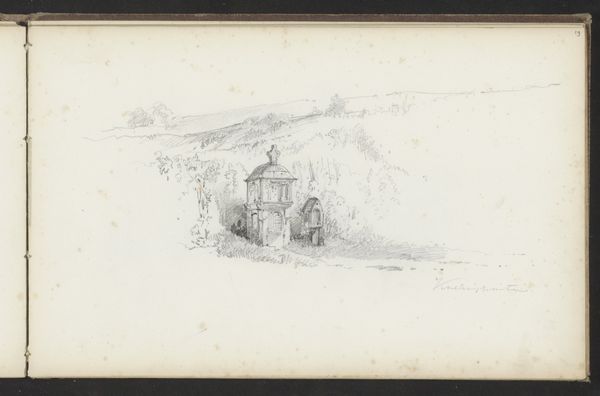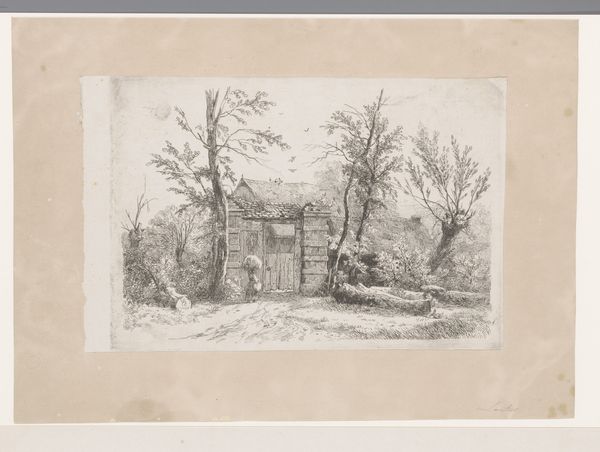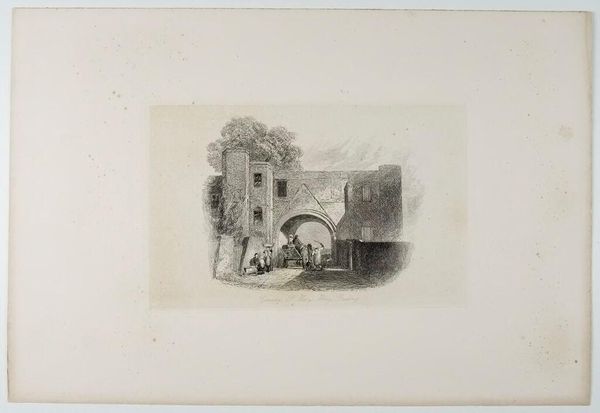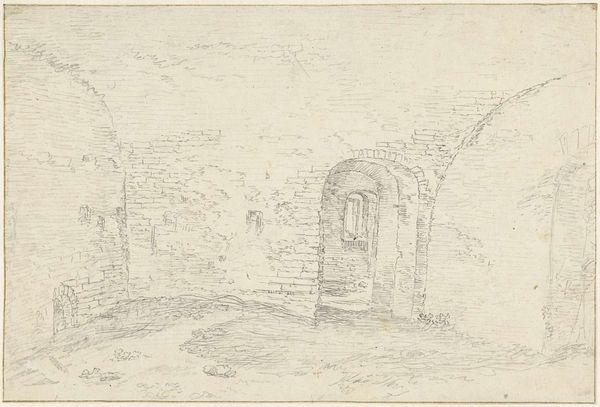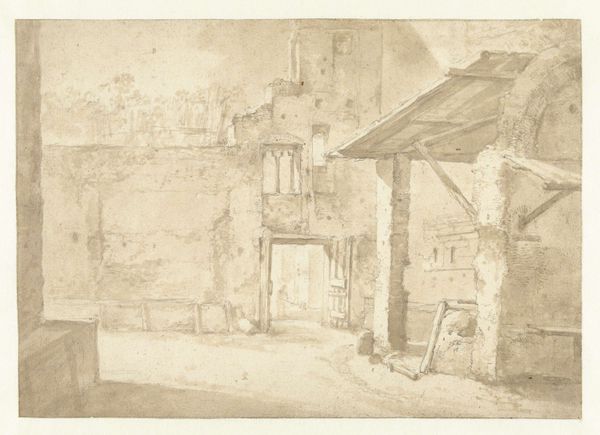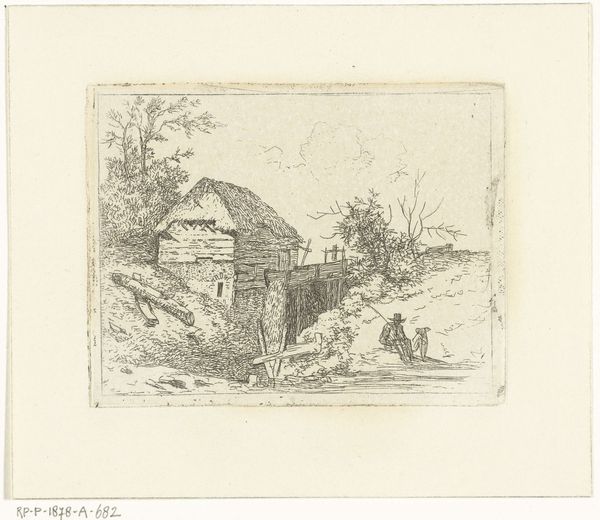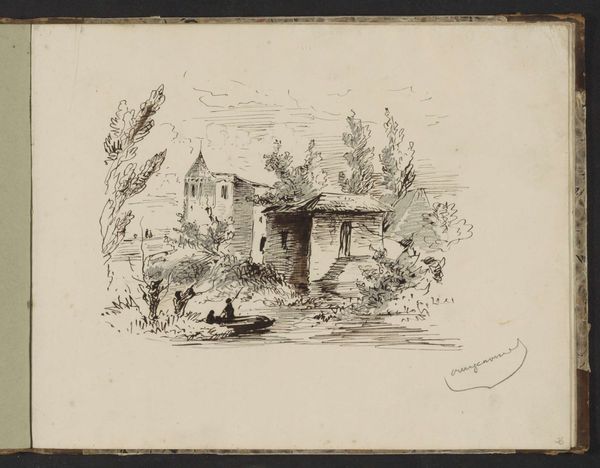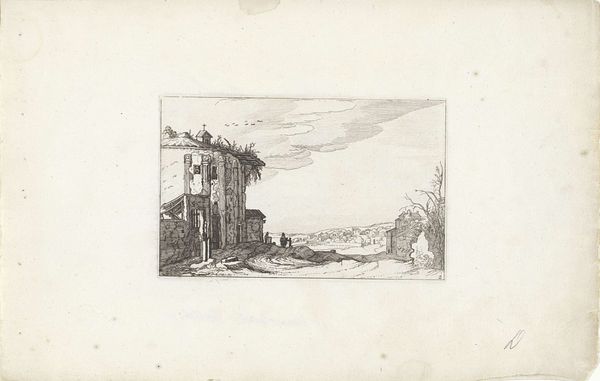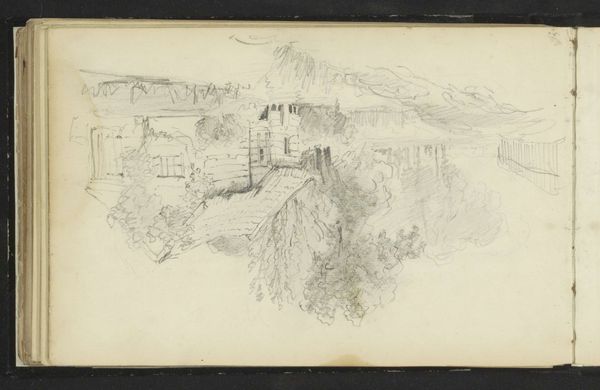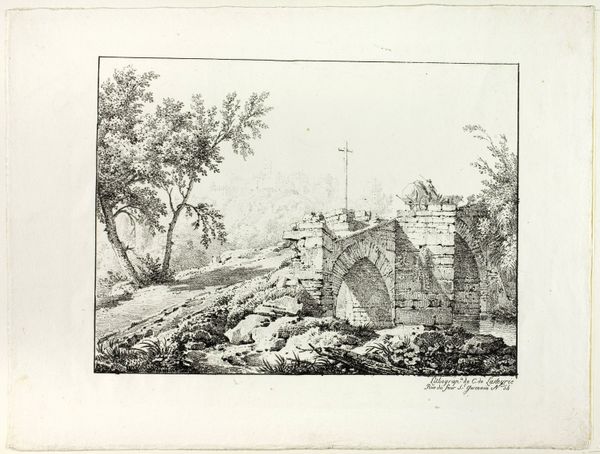
drawing, pencil
#
drawing
#
pen sketch
#
pencil sketch
#
landscape
#
pencil
#
realism
Copyright: Rijks Museum: Open Domain
Curator: Here we have Maria Vos's drawing, titled "Waterput", which she completed between 1864 and 1865. It's a pencil and pen sketch. It currently resides here at the Rijksmuseum. Editor: It has a melancholy air about it. Stark, almost severe, but compelling. A very solitary-feeling depiction. The light suggests a moment of quiet labor. Curator: Vos's art often portrayed everyday life, rendered in a realistic style. As such, this drawing offers a fascinating glimpse into 19th-century rural life. We are looking at a common scene, and also how society was developing and meeting its basic needs. It highlights how something as basic as water collection would have been part of daily existence. Editor: It definitely encourages one to contemplate those routine chores. The fact that it is rendered simply and quickly seems perfect—there’s something immediate and unassuming about it, as it draws one's eye into the quiet labor depicted. This artwork invites conversation about who was tasked with this kind of work. How does gender, race, and economic class intersect to form such experience? It becomes more than just a still-life observation; it highlights human needs. Curator: Absolutely. When situated alongside her other works and those of her contemporaries, we gain insights into artistic practices, art education for women at the time, the market for landscape drawings, and the development of artistic circles and their importance for women artists during that time. The work becomes evidence of an evolving social and professional role for female artists. Editor: Exactly, these landscapes allowed them, in some ways, to subtly participate in debates around labor. It provides a document of their place, in addition to artistic license at play during that moment in time. These women found themselves expressing their views even within the traditional academic realm, giving it a slightly personal lens. Curator: Vos's work offers much food for thought on art history, while examining labor within landscape and art practices as women were starting to claim agency. Editor: Absolutely; it helps to challenge any sort of aesthetic value judgement—opening channels of perception regarding everyday lived experience.
Comments
No comments
Be the first to comment and join the conversation on the ultimate creative platform.

